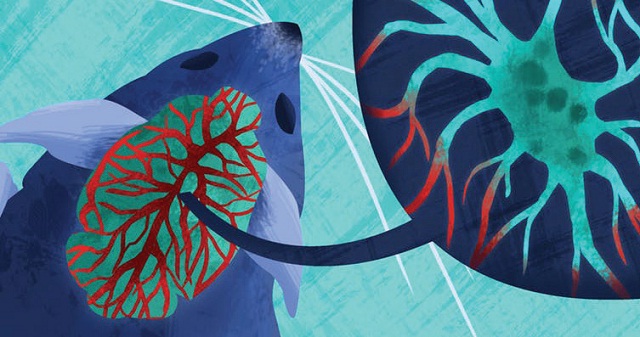
Kampala, Uganda | DAVID IRVING | Ben Franklin famously wrote: “In this world, nothing can be said to be certain, except death and taxes”. What he didn’t mention, despite being 83 years old, was a third, almost inevitable eventuality: ageing.
Depending on when in history and where on the planet you look, ageing is variously considered desirable – bringing with it wisdom and status – or as something to be feared, eliminated, or at least delayed as long as possible.
In the 16th to 18th centuries, Western societies believed old age was a time of considerable worth. But, since the 19th century, we have sought ways to eliminate or minimise the effects of ageing.
Even in the time of Herodotus (the 5th century), there were stories of a “Fountain of Youth” located far away in the land of the Ethiopians, whose waters would bring youth and vigour to those who drank from it.
Blood is a potent symbol of life and of death. It is hardly surprising, then, that this incredible fluid is linked to the search for eternal youth in literature, legend, magic and medicine.
Recent scientific studies have claimed, almost vampire-like, that transfusions of blood from teenagers can help delay or reverse the ageing process. Where do these claims come from? Do they stack up? And how long will it be before we have the power to stave off what now is inevitable?
The first blood transfusion from one human to another is reported to date from 1492, for Pope Innocent VIII. There is some discussion as to whether this was an attempt at a blood transfusion as we understand it today, or some other form of administration of blood (such as oral), given that the theory of circulation of blood was first published in 1628, some 150 years later.
Sources from 1873 stated that: “All the blood of the prostrate old man should pass into the veins of a youth who had to yield up his to the Pope.”
But earlier reports, from 1723, were less specific:
Three ten-year-old boys died because blood had been taken from their veins … in an attempt to cure the Pope.
Whatever the truth of the treatment, the pope did not recover, and neither did the boys. Here, at what is arguably the start of transfusion history, we can already see the lure of the belief in the power of young blood.
Fast forward to 2017, and the reputation of “young blood” is moving into the world of big business.
A company called Alkahest, based on work by Tony Wyss-Coray, a neurobiologist studying Alzheimer’s disease at Stanford University, is spruiking the results of a trial where plasma from young donors (aged 18-30) was transfused into patients with dementia.
Eighteen patients aged between 54 and 86 with mild to moderate Alzheimer’s disease were enrolled in the trial. They were infused with plasma (or placebo, in a control group) twice a week for four weeks.
Thankfully the trial was more successful than Pope Innocent VIII’s treatment. None of the patients showed any ill-effects, but neither did they show any improvement in tests of thinking ability. They did, however, demonstrate some improvement in tests that assessed their daily living skills.
At almost the same time, controversial trials by a company named Ambrosia (“food of the Gods” depicted as conferring immortality) are transfusing plasma from people aged 16-25 into people aged 35-92.
Despite the experimental nature of this treatment, participants are paying US$8,000 each to be included in the trial, for which there is no control group.
These factors make it virtually impossible to interpret the results, because people in the trial may “feel better” merely through having paid money for a treatment they believe is going to work.
The results of the study so far were presented by Jesse Karmazin at the Recode technology conference in Los Angeles in mid-2017. Ambrosia’s scientists examined the levels of various molecules, believed to be predictive of cancer or Alzheimer’s disease, in the blood of people who had been treated.
They found that those who had been treated with young blood had lower levels of several proteins known to be involved in disease, namely carcinoembryonic antigens (which increase in cancer patients) and amyloid (which forms plaques in the brain in Alzheimer’s disease patients).
However, the long-term significance of these changes is unclear.
 The Independent Uganda: You get the Truth we Pay the Price
The Independent Uganda: You get the Truth we Pay the Price


